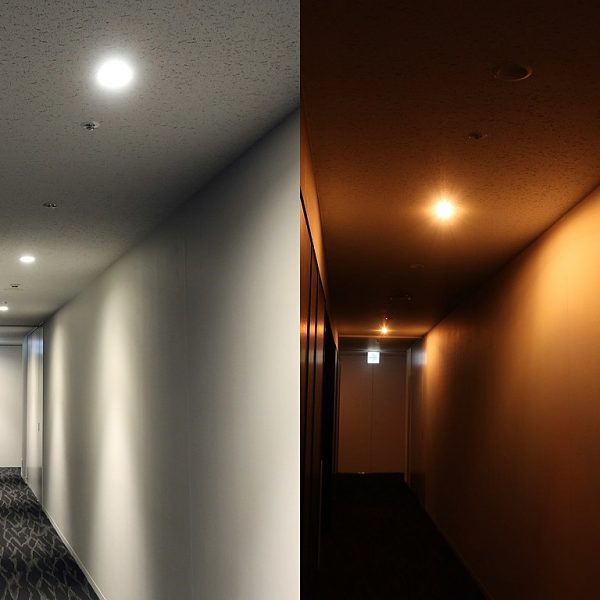
Whether it’s inclement weather or a temporarily overburdened electrical grid, power outages are problematic for Ontario businesses. Suppose your building doesn’t have a backup generator during such outages. In that case, when the lights go out, your emergency lighting and exit lighting are essential for building occupants to make it out safely.
Is Emergency and Exit Lighting Required by Law?
Section 9.9.3.14 of the Ontario Fire Code mandates that any building required to have a fire alarm system must also provide emergency lighting for exits and access to exits. Additionally, any room that can host more than 60 people must also provide emergency lighting.
In buildings taller than 18 meters, the emergency lighting must maintain power for longer than two hours, while structures shorter than that only need to provide illumination for more than 30 minutes. The power source for this emergency lighting must be separate from the building’s primary electrical power and activate when the regular supply is interrupted.
Is Emergency Exit Lighting Just Another Burdensome Government Regulation?
A Harris Poll conducted in 2017 questioned more than two thousand US adults about their confidence in safely exiting their workplace during a power outage, and more than one third responded expressed concern. Half of the respondents felt that navigating the stairs would be especially difficult during a power outage.
Forty-two percent admitted that they probably couldn’t properly execute their building’s emergency evacuation plan without enough illumination. Emergency lighting and exit lighting are not just another arbitrary government regulation. They are vital aspects of building safety that many building occupants desperately need.
Are There Different Types of Emergency Lighting?
Several types of emergency lighting are available to address different needs. The most common are external and internal bulkhead emergency lighting fixtures connected to the building’s main primary electrical source. When the main power is cut off during a general outage or from a damaged wire, the emergency devices operate on local battery power and illuminate the path to safety.
LED lights are increasingly popular due to their lower power consumption, and many companies proactively upgrade to them. Illuminated exit signs also operate on batteries after disruption of the primary electrical power. For structures with floor level changes and stairways, photoluminescent floor discs, paint, and tape can provide excellent visibility in dimly lit areas or under smokey conditions.
Where Is Emergency Exit Lighting Required?
Each building is unique, and the Ontario Fire Marshal has the final say on the subject. Still, you should provide emergency lighting to illuminate the following areas:
- Fire alarm pull stations
- Fire extinguishers and hoses
- Emergency escape diagrams
- Stairways
- Changes in floor levels
- Rooms without windows
- Bathrooms larger than eight m²
- Internal and external escape routes
- Corridor intersections
- Any equipment that gets shut down during an emergency
- All exit doors
- Elevators
- Any area larger than 60m²
Do Emergency and Exit Lighting Require Maintenance?
Though often overlooked, building owners and facility managers must schedule regular inspections and testing of their emergency and exit lighting equipment to ensure proper functionality in the event of an emergency. By contracting a professional, you get trained technicians that can perform the following services:
- Regular testing and inspections. Ontario requires monthly inspections and functionality tests for emergency lighting systems, and you need to repair or replace any equipment that doesn’t perform correctly.
- Maintain detailed records. The Ontario Fire Marshal may wish to review records of inspections and testing. Building owners need to have these documents on hand when he requests them.
Designing, maintaining, and upgrading your emergency and exit lighting system saves lives and is required by law. The technicians at All Protect Systems, Inc are experts in the field. Call them today to find out what they can do for you!